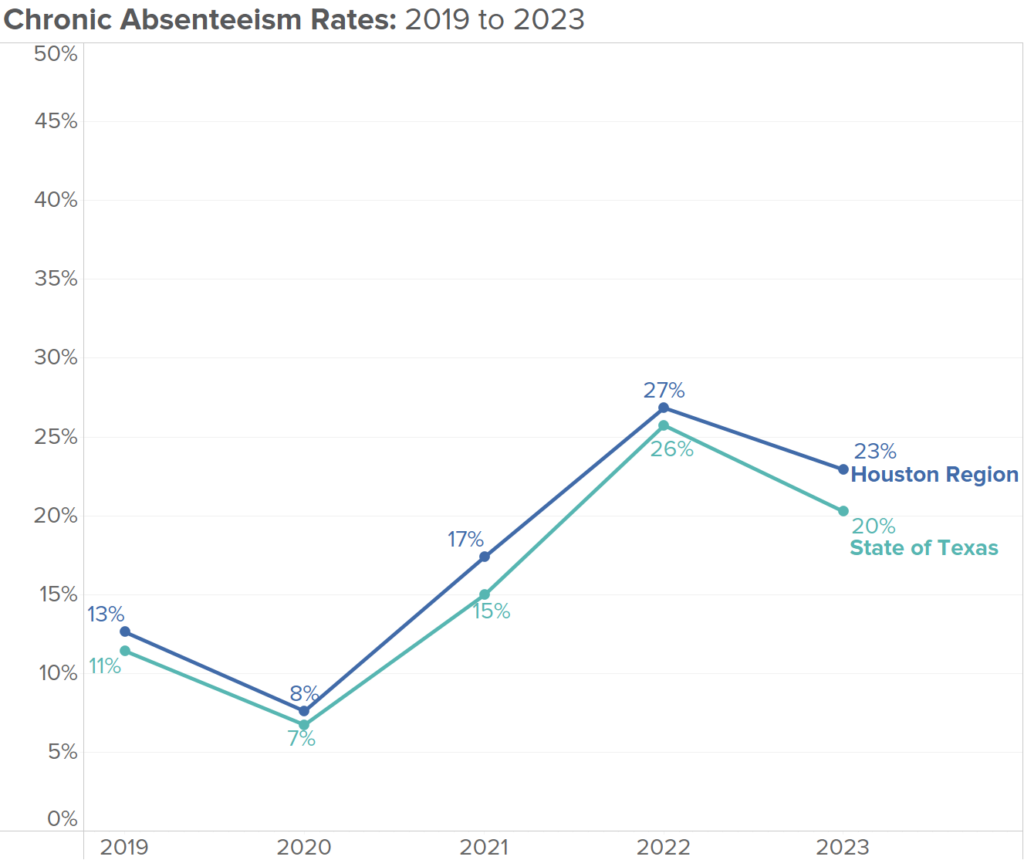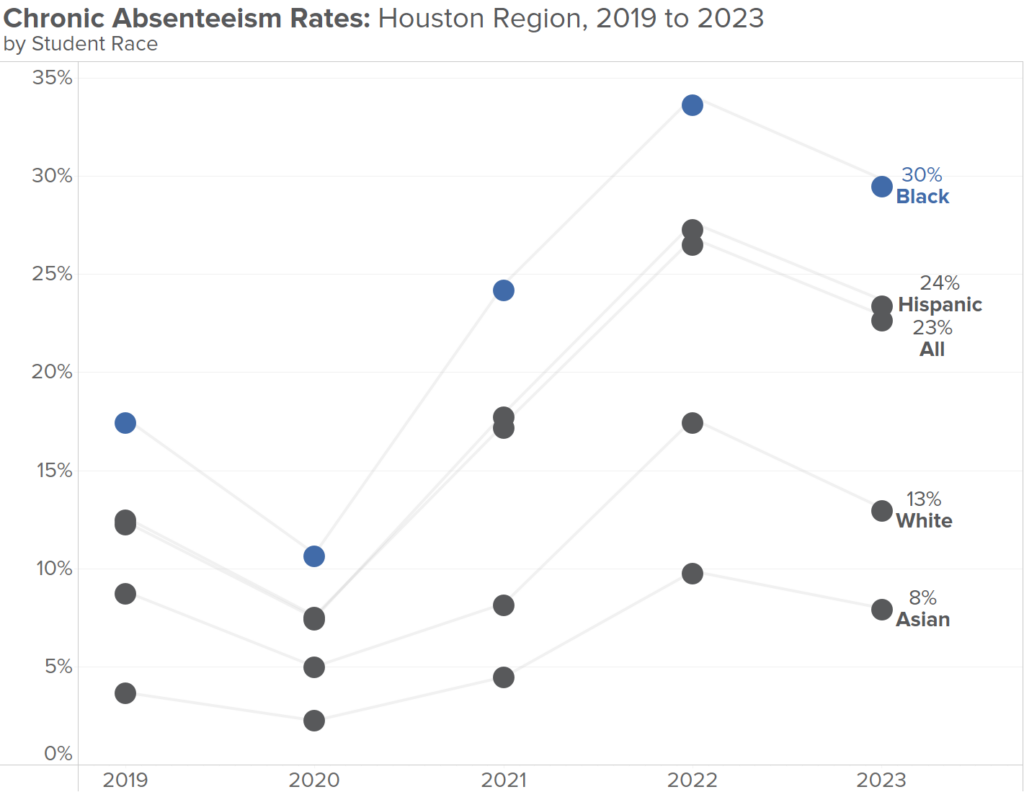Decline is hopeful, but 150,000 students still missed at least 10% of school year.
Consistent school attendance is key to student success. Over the course of a school year, being chronically absent—defined as missing 10% or more of school in a year—is equivalent to missing at least 18 school days. Research shows that chronic absenteeism results in lower student achievement outcomes, educational engagement, social-emotional development, and executive functioning.
Chronic absenteeism has implications for schools as well. In Texas, school funding is tied to “average daily attendance” or ADA, which means students must be present at school–not just enrolled–in order for districts to receive funding. In short, chronic absenteeism means students miss out on vital learning opportunities and schools lose out on vital resources.
Chronic Absenteeism Has Slightly Declined Since Pandemic
Across the nation, chronic absenteeism rates soared after the pandemic and have yet to return to pre-pandemic levels. Nationwide, nearly one in three students (31%) were chronically absent in the 2021-22 school year. This declined slightly to 28% during the 2022-23 school year.
The most recent release of the Texas Academic Performance Reports (TAPR) showed similar trends in chronic absenteeism across Texas and the Houston region. Following an all-time high in 2021–22, the state of Texas and the Houston region saw a slight decline in the rate of chronic absenteeism. Statewide, chronic absenteeism dropped from 26% to 20%. Regionally, chronic absenteeism dropped from 27% to 23%. Despite this progress, these rates are still high – nearly double the pre-pandemic rates of 2018-19.*

At the same time that chronic absenteeism exploded since the COVID-19 pandemic, overall attendance rates remained high across Texas and the Houston region. This likely means that the students who are missing school are those who are chronically absent and missing more school than ever before.

Chronic Absenteeism Affects Black, Special Education, and Economically Disadvantaged Students Most
Across the region, chronic absenteeism persistently and disproportionately affects Black students in comparison to their Asian, Hispanic, and white peers. In 2022-23, nearly one-in-three Black students in Houston were chronically absent, compared to almost one-in-four Hispanic students and one-in-eight white students.

Similar trends were present among special education (SPED) and economically disadvantaged (EcoDis) students. EcoDis and SPED students were nearly three times and two and a half times more likely to be considered chronically absent in the years immediately following the pandemic, with declines in 2022-23. Meanwhile, emergent bilingual (EB) students were less likely to be chronically absent compared to their peers.

A few factors may be contributing to both student and district-level trends. On the upside, since the pandemic, schools are more inclined to send children home when they are ill and parents are more likely to keep them at home. On the downside, the pandemic brought the day-to-day of schooling into homes via virtual learning, and many families subsequently dimmed the value of teachers, curriculum, and/or instructional practices. In the wake of these trends, districts have struggled to identify and implement family and student engagement strategies that reflect current realities and meet all groups where they are.
How Do Districts Stack Up?
While chronic absenteeism is declining in the Houston region since the pandemic highs, the rates still remain high. This has ramifications for both students and districts. Be on the lookout for our next story where we will examine new data on the effects of chronic absenteeism on Houston students and explore districts that appear to be making progress.
*Data Notes: TAPR data is lagged one school year and the most recently available data is from the 2022-23 school year. Chronic absenteeism data for the 2019-20 school year is only reflective of the school year prior to school closures in March 2020 and not reflective of any attendance disruptions related to the pandemic.


